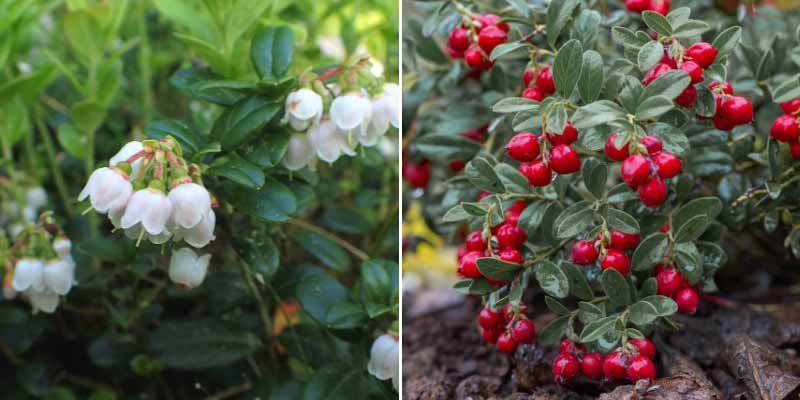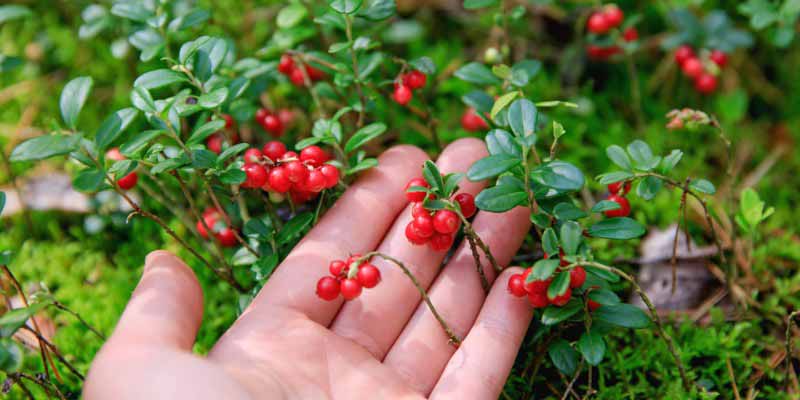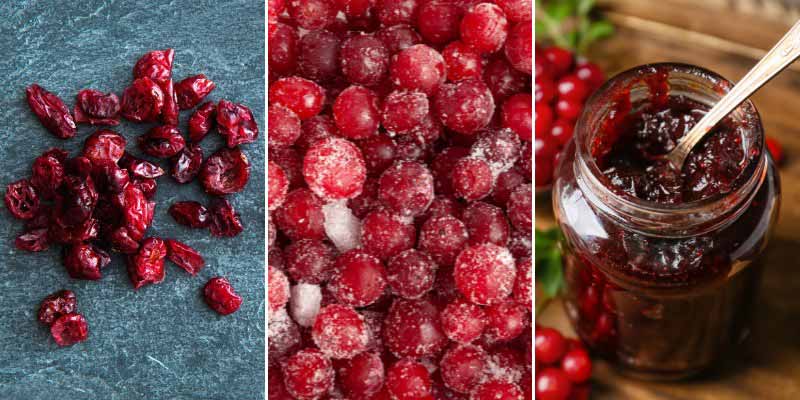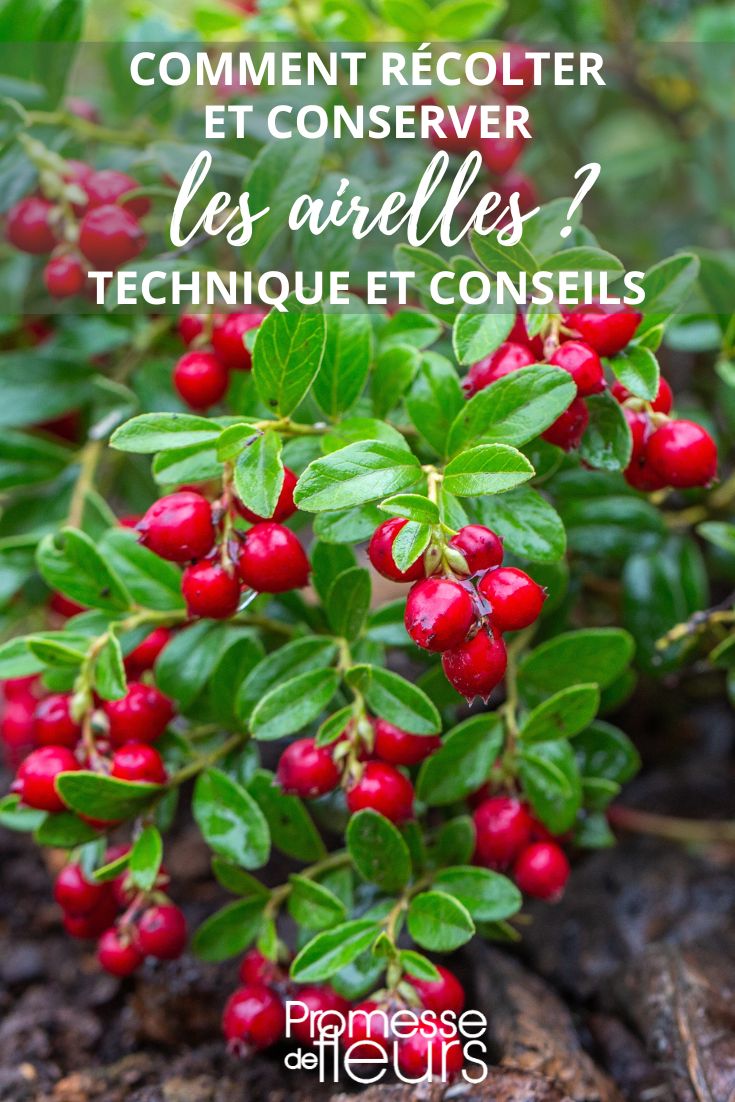Cranberries are small bright red berries, quite similar to lingonberries, valued for their tangy taste. They are the fruits of Vaccinium vitis-idaea, a mountain shrub that can also be grown in gardens. Cranberries can brighten up many dishes and desserts: they can be made into sauce to accompany savoury dishes, used in baking, in compotes, marmalades, or jams. Renowned for being rich in vitamins and antioxidants (notably vitamin E and polyphenols), cranberries are also recognised for their health benefits. Discover in this tutorial when and how to harvest them, as well as the different methods for preserving them!
Cranberries: what are they?
Cranberries are produced by the Vaccinium vitis-idaea, also known as the Mountain Vine, a small evergreen shrub that measures only 10 to 40 cm in height. It forms lignified stems and bears dark green, glossy leaves, 1 to 3 cm long, and offers bell-shaped white flowers in spring. This relative of blueberries and cranberries is a very hardy plant found in cold regions and wooded areas, up to 3,000 metres in altitude. It grows spontaneously in North America and Europe, in acidic and poor soils, typically in coniferous forests, in turf moors, and at forest edges. Its berries are easily spotted due to their bright red colour. In France, cranberries grow wild, particularly in the Alps and the Jura. However, they are protected in several French departments.

When to harvest cranberries?
The harvesting period for cranberries depends on several factors, including climate and altitude. They are usually harvested between late August and early October. However, at lower altitudes, they may sometimes be ripe as early as late July to early August. It is important to choose ripe fruits for better flavour and optimal preservation. They should be bright red (uniformly), have started to soften, and detach easily from the branches.
How to harvest them?
You can harvest cranberries by hand or using a cranberry comb. If you use your hands, be careful not to damage the branches or leaves of the shrub. If you opt for a cranberry comb, make sure to gently pass it through the branches to only pick the ripe fruits.

How to preserve cranberries?
Once the cranberries are harvested, we recommend washing them thoroughly. Then, several options are available for preserving them and enjoying them all year round.
Short-term preservation: in the refrigerator
If you plan to consume the cranberries quickly, you can simply store them in the vegetable drawer of your refrigerator. They will keep for about a week.
Freezing
This is the simplest and most effective method for preserving cranberries. After washing them, drain them and place the fruits in freezer bags or an airtight container and put them in the freezer. They can be stored this way for at least six months. You can use them directly in your recipes without needing to thaw them.
Drying
Cranberries can be dried and consumed like raisins, for example, with cereals, in yoghurts, salads, or as a snack with other dried fruits. Dried cranberries can also be incorporated into both savoury and sweet recipes: cakes, pastries, etc.
To dry them, you can use a dehydrator if you have one. Otherwise, spread the cranberries on a baking tray lined with parchment paper, ensuring they do not touch each other, then place them in the oven at a low temperature (50°C) for several hours. Once thoroughly dried, store them in an airtight glass jar. You can keep them this way for several months.

In jam or jelly
Cranberries are perfect for making jam or jelly. For 1 kg of cranberries, you will need 1 kg of granulated sugar and one lemon.
- Start by rinsing and draining the cranberries
- Next, cook them for 5 to 10 minutes in a saucepan with a little water
- Add the sugar and lemon juice, and bring to a boil
- Let simmer on low heat for about 30 minutes, stirring
- Then remove from heat and pour into jam jars.
































Comments